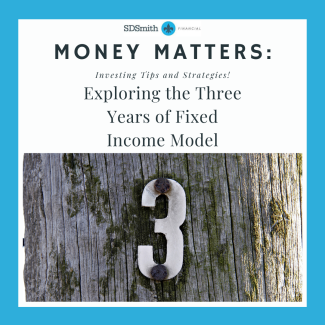
Planning for Income in Retirement: Exploring the Three Years of Fixed Income Model
Planning for income in retirement can be a tricky task. Different retirement accounts come with various tax treatments, which can significantly affect your income and wealth. Previously, we discussed the 60/40 portfolio and the benefits of using high dividend yield funds in retirement. Today, let's dive into the "Three Years of Fixed Income" model. But first, let's clarify the difference between fixed income and equity, and their roles in retirement planning.
Just like in the 60/40 portfolio, equities or stocks represent the more aggressive part of a portfolio. According to Curvo, the S&P 500 had an annual standard deviation of 14.81% from 1992 to 2024, whereas the Bloomberg US Aggregate Bond Index had a standard deviation of 4.54% since September 2011. Stocks bring growth and volatility, while bonds provide stability.
Volatility and growth are key concepts behind the "Three Years of Fixed Income" portfolio, where historical data guides our growth strategy. Stocks drive portfolio growth but also introduce volatility, which we aim to mitigate during "Bear Markets" (periods of decline). Historically, the longest Bear Market in modern history lasted from 1946 to 1949, just after World War II. Recent Bear Markets, such as the 2008 Global Financial Crisis and the Post-Covid Bear Market of 2022, lasted 17 months and 10 months respectively.
Now, let's consider some retirement income formulas. Take the rule of 4%: if you need to withdraw $30,000 annually in retirement, you would need $750,000 saved. In a 60/40 portfolio, this would mean $450,000 in stocks and $300,000 in bonds. Under the Three Years of Fixed Income model, we multiply the annual need by three for the bond allocation, resulting in $90,000 in bonds and the remaining $660,000 in stocks. This shifts the portfolio allocation to 88/12, as opposed to 60/40.
What does this increased stock position mean? It means potentially higher returns and higher risk. Over the past 25 years, stocks have grown annually by 9.2%, while bonds have grown by about 4%. This gives the Three Years of Fixed Income model a weighted expected return of 8.576%, compared to 7.12% for the 60/40 model. The standard deviation also increases, from 10.7% in the 60/40 model to 13.578% in the Three Years of Fixed Income model.
Is the extra risk worth the extra return? I believe it is. Over a 20-year period, the 60/40 portfolio could grow to an estimated $1,721,958.48. However, the Three Years of Fixed Income model could reach an estimated $2,424,436.80, a difference of over $700K.
This strategy requires time, discipline, and expert knowledge to implement effectively. If you're interested in exploring this strategy for your portfolio, set up a call with us today!



